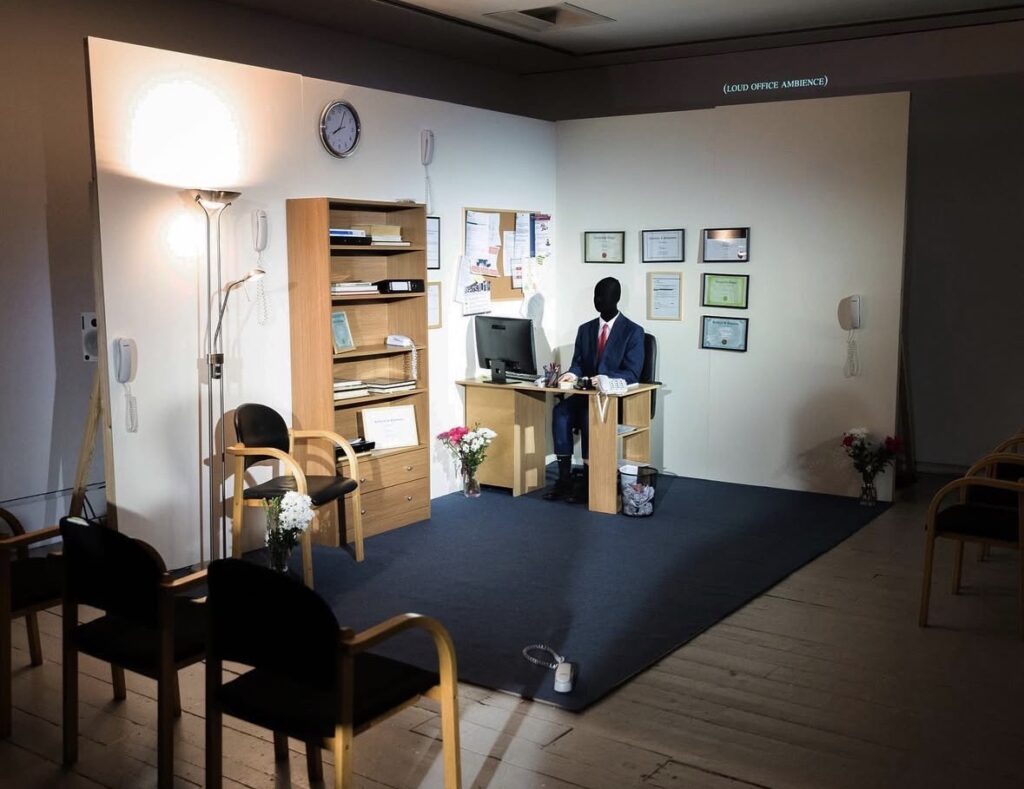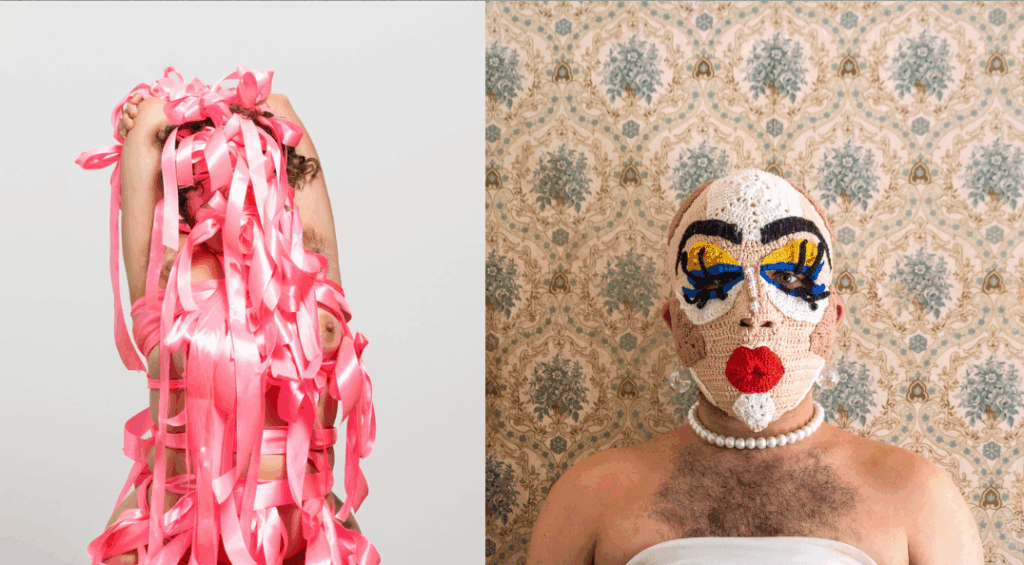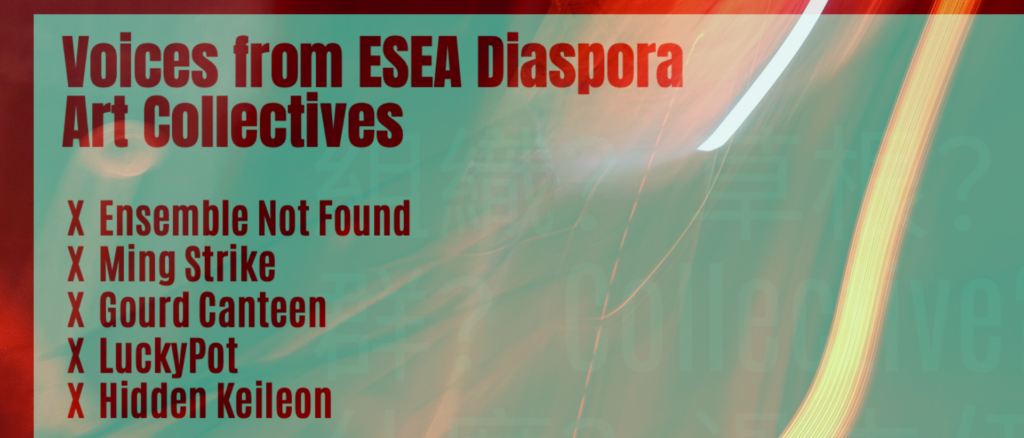AMNION | LYNN LU
This work thinks through water as a medium that literally connects all watery bodies – all living creatures to each other, as well as to hydrogeological and meteorological bodies, the significant water loss in menopausal bodies, our human affinity to whales – the only other species that undergoes the climacteric and lives a long post-reproductive life, and the enduring biological enigma that is the menopause.
Layered voices narrate text excerpts from philosopher Astrida Neimanis’ and writer Darcey Steinke’s ideas exploring the leakiness of borders between our bodies and our environment, and between human and cetacean, as well as the fallacies and fears that continue to surround bodies transitioning from a state of fertility to one of barrenness that affects more than half the world’s population.
Conceived, written, narrated & performed by: Lynn Lu
Directed, filmed, edited by: Ana de Matos
Second performer: Satsuki Lu-Sharpe
Please note: If you can’t watch the video above, please try this Vimeo link: https://vimeo.com/656951279
Text from video:
Blood, bile, intracellular fluid; a small ocean swallowed, a wild wetland in our gut; rivulets forsaken making their way from our insides to out, from watery womb to watery world.
As bodies of water we leak and seethe, our borders always vulnerable to rupture and renegotiation.
Our wet matters are in constant process of intake, transformation and exchange.
Drinking, peeing, sweating, sponging, weeping,ebbing, dripping, raining, flushing, drinking, peeing, sweating, sponging, dripping, raining.
Our own embodiment is never really autonomous: we require other bodies of other waters (that in turn require other bodies and other waters) to bathe us into being.
Do your tears flow too freely? Did your eyes water upon finding that old letter folded in the pages of a book, long forgotten? The saliva that floods your mouth when your teeth pop the peel of a juicy kumquat.
We are the watery world – metonymically, temporarily, partially, and particularly. Water irrigates us, sustains us, comprises the bulk of our soupy flesh.
Humans and other animals, plants, funghi but also geological and meteorological bodies such as oceans, rivers, aquifers, subterranean streams, clouds, storms, swamps, and soils – all dripping or tidal or damp.
Bodies of water puddle and pool. They seek confluence. They flow into one another in life-giving ways, but also in unwelcome, or unstoppable, incursions. Even in an obstinate stagnancy they slowly seep and leak. We owe our own bodies of water to others, in both dribbles and deluges.
Milky fluids cannot be disentangled from Arctic currents or gastric juices, from amniotic seas or cisterns full of our liquid waste.
These bodies are caught up in one another’s currents – as they are with the whale’s body, the body of the rain cloud, and the body of the sea.
My body of water breaches the skin sac – regularly, imperceptibly, and also in periodic demonstrative gushes. This might be in the nursing of an infant; it might be in an involuntary milking at the sound of a baby crying, or when too much time since last nursing has passed.
A watery body sloshes and leaks, excretes and perspires. Its depths gurgle, erupt.
Our bodies are hydrophilic. Two-thirds of our bodies is constituted of water. The same percentage of the earth’s surface is wet and blue. Water infiltrates and inhabits the vapour we breathe, the land we work, the animal, vegetable, meteorological and other earth others, with whom we share this planet.
The Darwinian primordial ooze imaginary is relatively recent. Many other stories have long affirmed the connections between water, beginnings, and life. In Australian Aboriginal cosmology, the Law understands the stream of life as generated by water, while the image of parting waters, figures within a number of creation stories, from the Hindu goddess Bindumati, who divides the Ganges, to the Egyptian goddess Isis, who divides the river Phaedrus. In Judeo-Christian creation stories, water exists before light. In others – stories of the Aztec goddess of oceans, of the oceanic and menstrual Sumero-Babylonian goddess Tiamat, and of Hindu goddess Kali – water is often connected to a feminine fecundity, understood as a sacred source of creation.
These deep watery roots power the enduring allure, of a return to the feminine seas, seemingly always swimming, in the margins of our collective unconscious.
Water is life. It’s the briny broth of our origins, the pounding circulatory system of the world, a precarious molecular edge on which we survive.
We also share considerable bodily connectivity to whales and other cetaceans. Peel back the blubber of a cetacean’s fin and you will see something not unlike our own human hands: five fingers, a wrist, an elbow, a shoulder. We both function best when our bodies are about ninety-eight degrees Fahrenheit. We both have lungs that breathe air, and giant brains wrinkled with neocortex. We both have spindle cells that are linked to empathy, and we are social animals. Like us, mother whales gestate their babies within watery wombs, and raise one child at a time. They nurse for several years and teach their offspring to speak, forage, and follow the rituals of their pod.
Humans, orcas, narwhals, pilot whales, and beluga whales, are the only five species that experience menopause, and then live long post-reproductive lives.
Long before Darwin uncovered the evolutionary forces that linked us to animals, menopause itself was associated with the ineffable, the bestial, the base. A French medieval alchemist explained that if you took a hair from an old woman’s mons pubis, mixed it with menses, and planted it in a dung heap, at the end of the year you’d find a wicked venomous beast. Edward Tilt, author of the 1857 “The Change of Life in Health and Disease”, and medical educator and member of the Royal College of Physicians, claimed that one of his patients believed the devil had lodged inside her womb. “Something is sent to the brain,” he wrote, “so that women are no longer the mistresses of their own actions, she is fuddled with animal spirits.” He also wrote that hot flushes were preceded by “strange sensations”, which resemble pulses, like a live animal throbbing in the stomach.
Menopause remains one of the great mysteries of biology. It goes against the theory of natural selection – that a creature’s main focus must be having as many offspring as possible. Menopause is an enigma, a physical characteristic that should, according to Darwin’s theory, have been selected against. Aristotle thought a woman’s menstruation was caused by the lunar cycle’s pull on all liquid, be it ocean waters, or uterine blood. Hippocrates speculated that women let unneeded blood go each month because they were less active than men. Pliny felt the odour of menstrual blood caused new wine to go sour, and made seeds sterile, buds fall off trees, and iron corrode. Early menopause treatments included: Never eat sausage, particularly before bed. Sponge the body three times a day with aromatic vinegar. Apply several leeches to the anus. Fast on milk one day out of every 15. Drink the bone marrow of recently killed animals.
The most common clues for demonologists, were connected to menopause. Chin hairs. Witch. Wrinkles. Witch. Warts. Witch. If a woman had on her arm a skin tag, a bit of gray flesh, that looked like a miniature teat, then she was a witch. If, in the presence of others, a woman grew red and perspired heavily, then she was a witch. If, in summer, unable to sleep, she wandered in her nightgown outside her house, then she was a witch. If she was quarrelsome, angry, spoke loudly, and moved at times, in quick bursts of chaotic energy, to open a window or get a ladle of water, then she was a definitely a witch.
After a female whale gives birth, multiple females, including matriarchs, gather around the newborn and lift it up to the surface for its first breath. The toothmarks on the head of a calf named J50 when she was born, may mean that the baby was breech, and that an older female served as midwife, pulling the calf out of the mother.
Estrogen helps our tissues retain moisture…
… aquifers, subterranean streams, clouds, storms, swamps, and soils – are all dripping or tidal or damp.
Texts referenced, quoted, and used in work:
Neimanis, Astrida. Bodies of Water: Posthuman Feminist Phenomenology. London: Bloomsbury, 2017.
Neimanis, Astrida. “Hydrofeminism: Or, On Becoming a Body of Water.” in Undutiful Daughters: Mobilizing Future Concepts, Bodies and Subjectivities in Feminist Thought and Practice, eds. Henriette Gunkel, Chrysanthi Nigianni and Fanny Söderbäck. New York: Palgrave Macmillan, 2012.
Steinke, Darcey. Flash Count Diary: Menopause and the Vindication of Natural Life. New York: Sarah Crichton Books, 2019.
Lynn Lu (PhD, AFHEA) is a visual artist from Singapore, trained in the US, France, Japan, and Australia.
Her multidisciplinary practice revolves around participation and collaboration, context and site specificity, and the poetics of absurdity. Engaging vigorously with the present reality of all that is here-and-now, the meaning of her works often manifests in the resonant relationships created between herself and her audience, and between the audience themselves.
Lynn exhibits and performs extensively worldwide. Recent venues include SFMOMA (2021), National Gallery Singapore (2021), Staatlichen Kunstsammlungen Dresden (2019), Framer Framed (2018), Science Gallery London (2017), Saatchi Gallery (2017), Palais de Tokyo (2015), The Barbican (2015), Perth Institute of Contemporary Arts (2013), Beijing 798 Art Zone (2009), and Singapore Art Museum (2007).
Lynn lives and works between Singapore and London. She is a Visiting Artist at London College of Communication, University of the Arts London, Associate Lecturer at Nanyang Academy of Fine Arts, and Associate Artist at ]performance s p a c e [. lynnlu.info
Ana de Matos is a queer filmmaker with a background in anthropology, based in London and director of the production company CAMEYE.
Ana’s current practice explores the body as a moving sculpture and how the moving sculpture connects with liminal space. It is driven by meticulous observation and a playful approach to blending formats – from cinematic to a consumer DIY aesthetic. The process involves a daily spiritual practice which lays the groundwork for activating the inner lens, which in turn allows Ana to create from a space of improvisation and freedom. This process is an ongoing dialogue between our inner and outer worlds, the microscopic matter inside the human body and the infinity of the cosmos.
The foundation for this current work comes from fifteen years of making films in the arts – specialising in weaving the performing arts with documentary storytelling. Having worked with hundreds of artists and the UK’s leading arts organisations, Ana has been making films and audio-visual content that seek to inspire and capture the imagination of the viewer through compelling narratives and an experimental approach. cameyestudios.com
Commissioned by performingborders in December 2021
Supported by Arts Council England and Necessity Fund



